Living spaces richly finished with varieties of Italian marble lie behind the opaque facade of this house in Victoria, Australia, conceived by designer David Hicks.
Woodend house is located in Macedon Ranges, a region of Victoria characterised by sprawling forests and rolling hillsides.
Inspiration for the home’s design, however, stems from European vernacular architecture, in particular the villas seen across the French, Tuscan, and Puglian countryside.
“I was inspired by European villas as they can have a very simple architectural style, punctuated by French doors and embellished just enough to make them pretty,” David Hicks told Dezeen. “Neither hyper-minimalist nor overtly rustic, Woodend achieves a harmonious balance of nostalgic architectural references and quiet grandeur, complementing the home’s rural setting.”
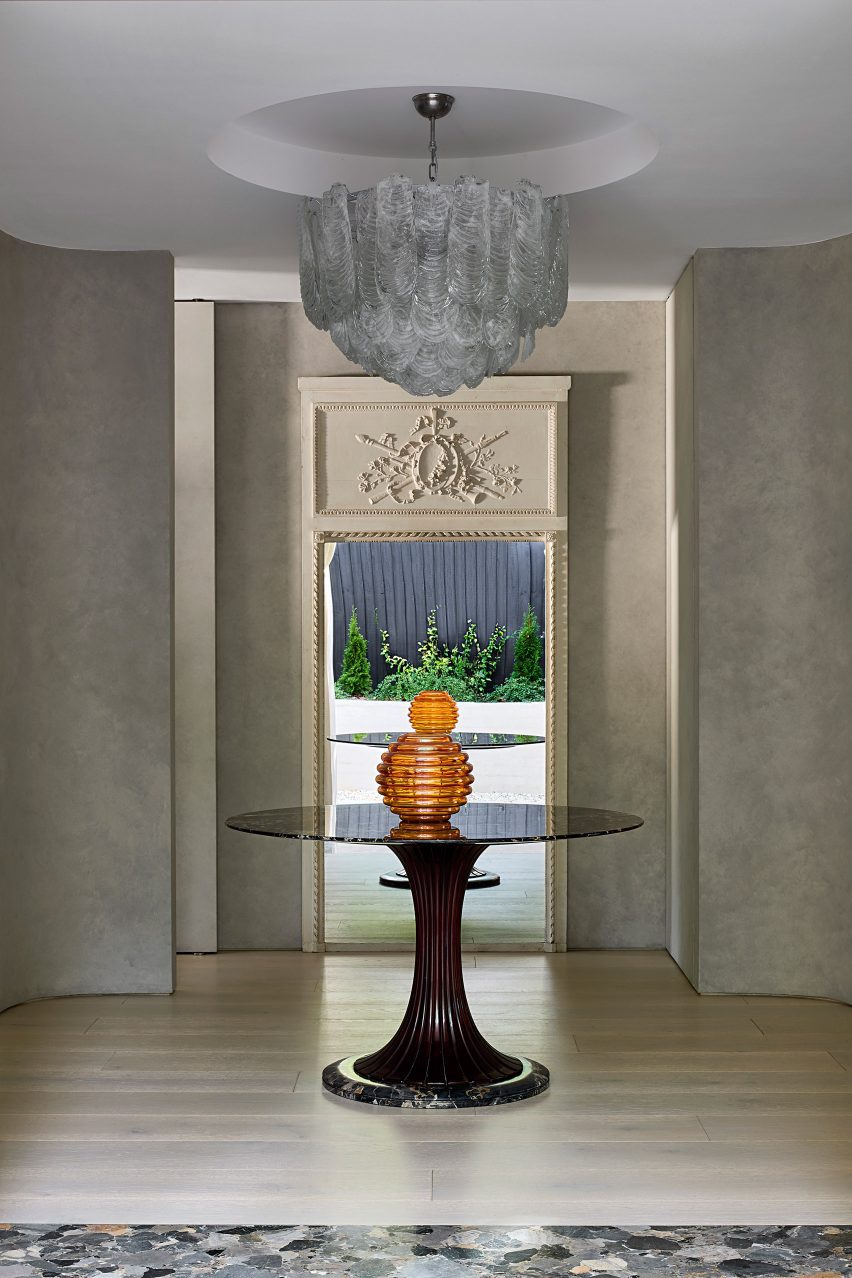
The one-storey home belongs to an older couple downsizing from their previous property devised by Hicks, which also had a windowless facade.
“In many of my architectural projects I have opted to have no windows on the front facade. I like this style of anonymity, of not knowing what lies beyond, it creates intrigue,” explained Hicks.
“As I design from the inside out I like to orientate the rooms away from facing the front; this provides privacy and allows you to experience the home as you enter, not before.”
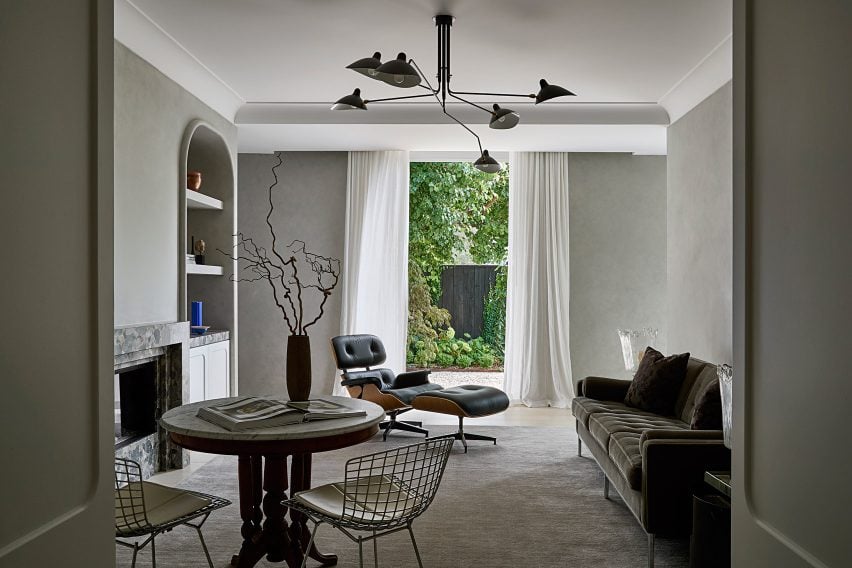
As the front facade of Woodhouse is also void of any doors, access is instead granted through a wrought-iron arched gate to the side of the house. This is followed by a portico, which leads into an entrance vestibule.
The walls here, as throughout the rest of the home, have been rendered in micro cement and then limewashed to give off a “stone-like tacitility”. A vintage chandelier crafted from ruched slivers of Murano glass hangs from a circular recess in the ceiling.
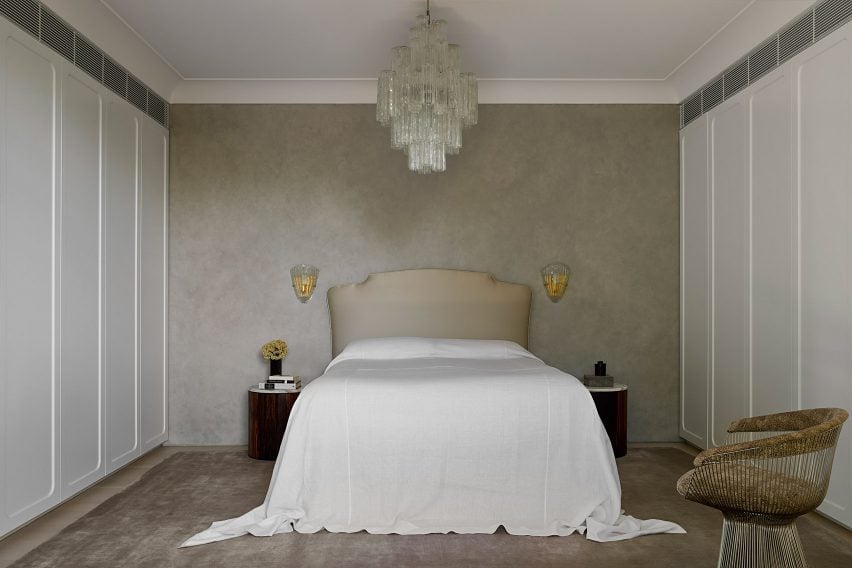
The vestibule connects to a long corridor, from which all the other rooms branch off.
This includes a relaxed study-cum-sitting area that the studio refers to as “the retreat”. It features an Eames lounge chair, a multi-armed light by French designer Serge Mouille, and a fireplace with a Ceppo marble surround.
The same marble has been used to make shelves in two arched display niches that have been created in the wall.
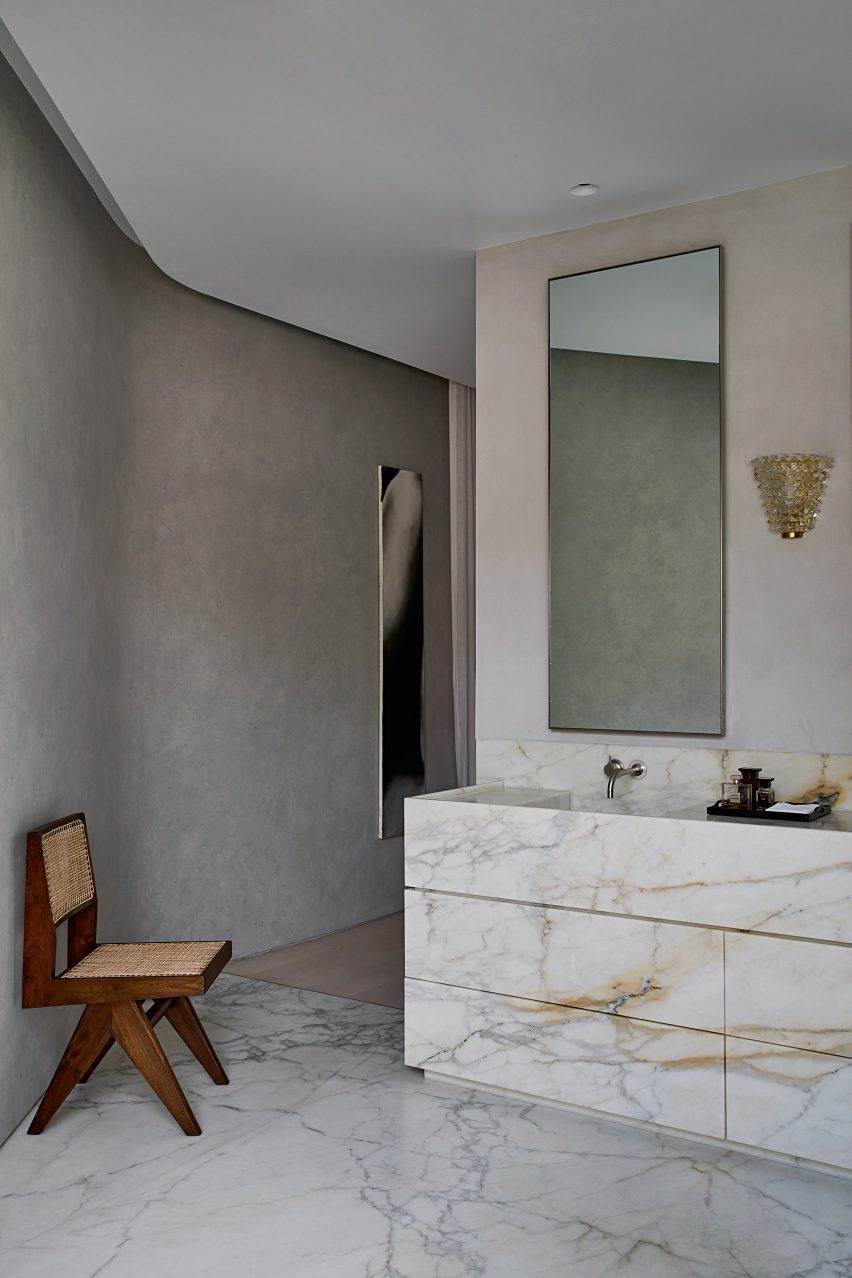
A set of double doors links to the principal bedroom, which has been finished with plush decor pieces, including a velvet rug, a satiny headboard and fluted glass wall sconces.
Storage, meanwhile, is concealed behind white lacquered panels.
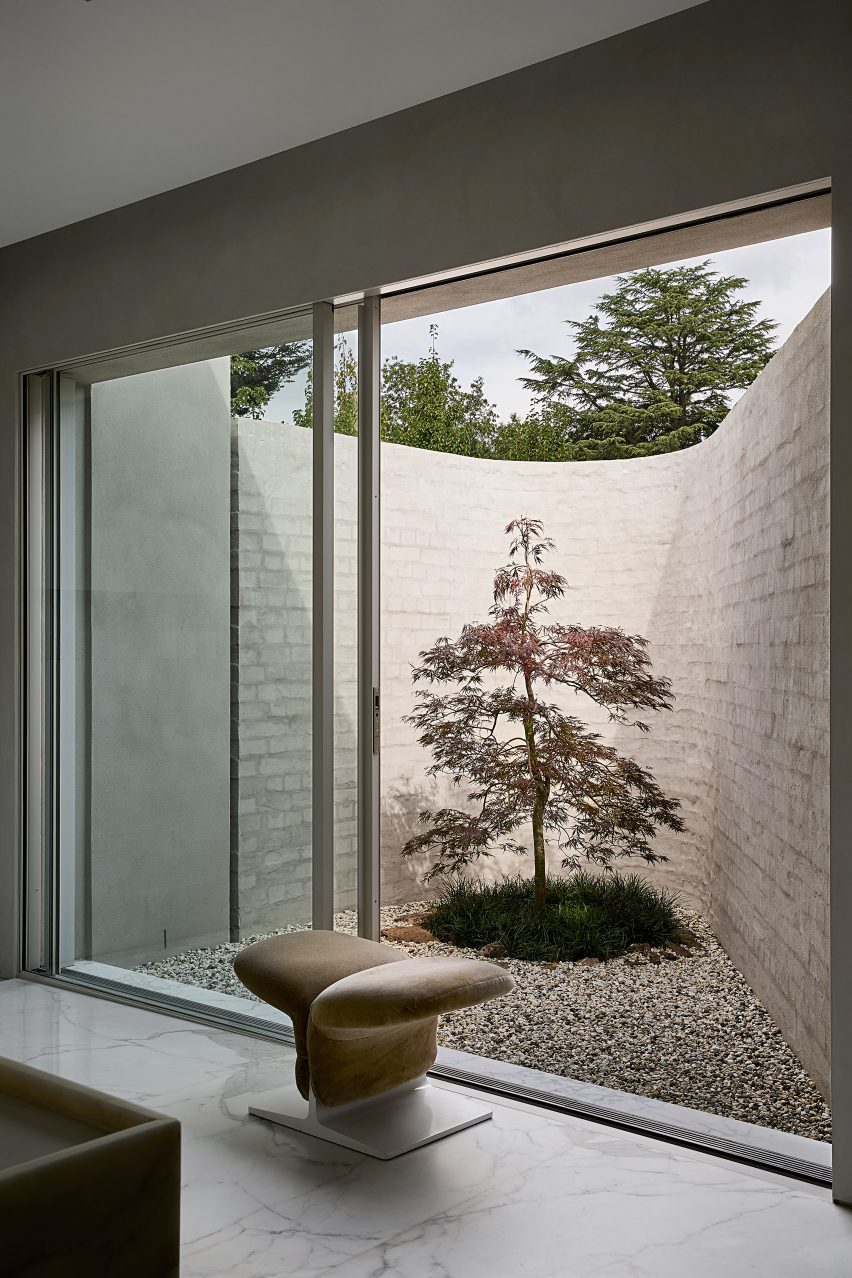
It also has an ensuite bathroom, in which surfaces are lined with pale Calacatta marble.
Huge sliding glazed doors have been inserted at the back of the space, providing views through to a small brick courtyard that’s centred by a miniature maple tree.
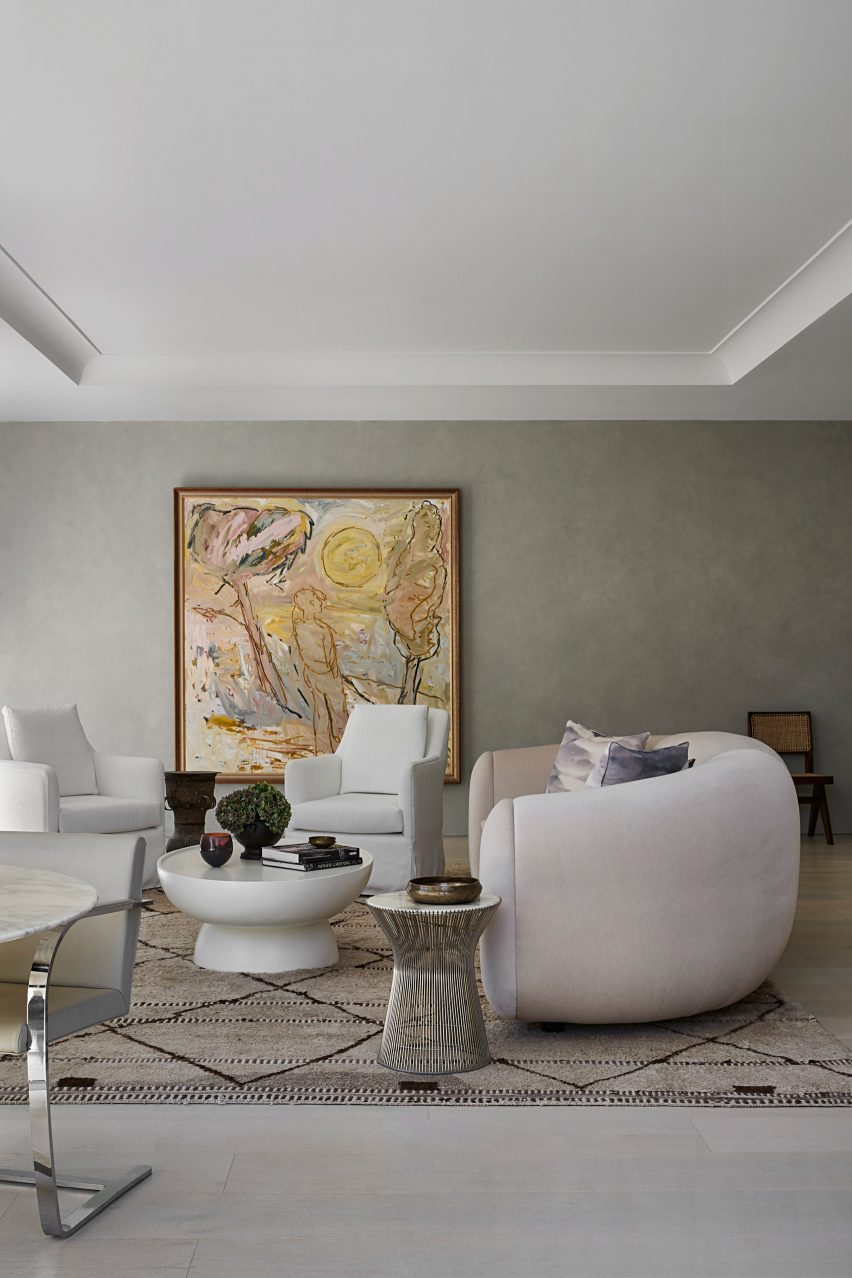
In the larger, more formal living room, a couple of white armchairs have been paired with a curved baby pink sofa. Sheer linen curtains veil French doors that open onto the garden.
The kitchen sits towards the back of this space, comprising simple white cabinetry and a Calacatta marble breakfast island.
In the home’s powder room, the studio has used Ceppo marble again, applying the strikingly patterned stone across the walls, floor, and washbasin.
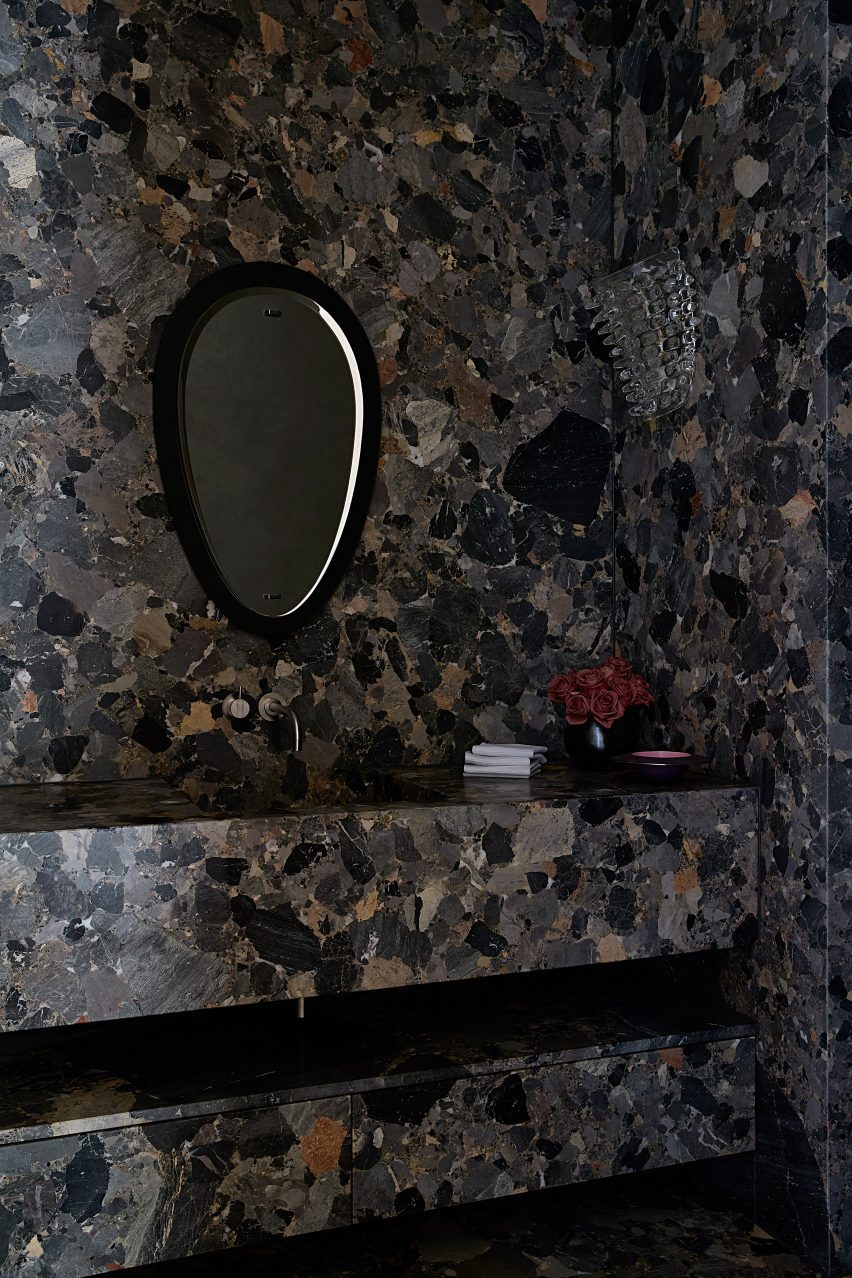
There are several other Australian homes that feature eye-catching facades. Recent examples include the Birdwood house by architect Peter Besley, which sits behind a perforated screen of terracotta brick and metal mesh.
There’s also Bangalow Road House by Son Studio, which is fronted by a wall of timber louvres, referencing the aesthetic of traditional wooden beach shacks.
The photography is by Shannon McGrath.
→ Continue reading at Dezeen
